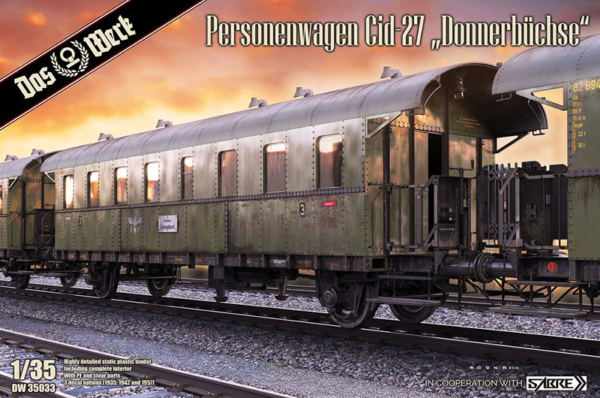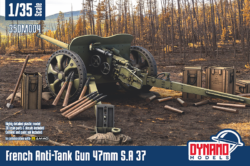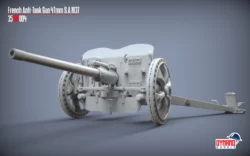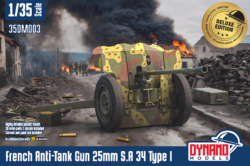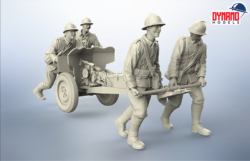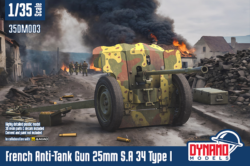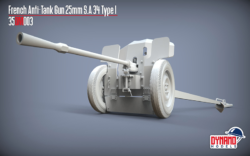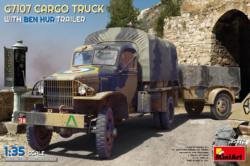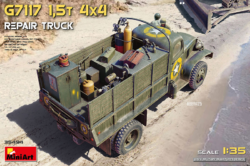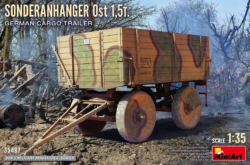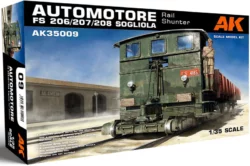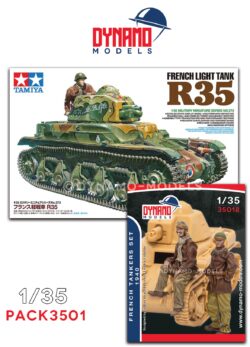Das Werk 35033 – Personenwagen Cid-27 “Donnerbüchse“
79,95€
– Plastic model kit to build a Personenwagen Cid-27 ‘Donnerbüchse’ Das Werk.
– Scale plastic kit include photo-etch, clear parts and decals.
– Model to be assembled and painted. Glue and paint not supplied.
2 en stock
The Das Werk 35033 Personenwagen Cid-27 “Donnerbüchse” is a meticulously crafted 1/35 scale model kit of the iconic German “Donnerbüchse” (“Thunderbox”) passenger wagon, officially designated as Personenwagen Cid-27. These durable and robust passenger wagons were introduced in the 1920s by the Deutsche Reichsbahn (German State Railway) and became a staple of German rail transport. Known for their distinctive rattling sounds on the rails, these wagons were a common sight on the German railways throughout WWII, used for both military and civilian transport. Das Werk’s kit captures the rugged details and unique design of the Donnerbüchse with high accuracy, making it a unique addition for railway and WWII modeling enthusiasts.
Key Features:
- Scale: 1/35, matching the scale of most military vehicle kits, allowing for cohesive diorama setups with tanks, soldiers, or other WWII vehicles.
- Detailed Exterior Design: The kit accurately replicates the boxy and functional design of the Donnerbüchse, with finely molded details, including rivets, window frames, and door panels that add depth and realism.
- Accurate Interior Details: The interior of the wagon is fully represented with passenger seating, overhead luggage racks, and other features characteristic of the Cid-27. This detail enables modelers to showcase the interior through the windows or open doors.
- Photo-Etched (PE) Parts: Includes PE parts for fine details such as steps, grab handles, and other small components that enhance the overall realism and historical accuracy.
- Opening Doors: The kit provides options to assemble doors in open or closed positions, offering flexibility in display options, particularly for dioramas featuring boarding or disembarking scenes.
- Clear Window Parts: Clear plastic parts are provided for the wagon’s windows, allowing for a transparent, authentic look that reveals the interior while enhancing realism.
- Realistic Suspension and Underbody Details: The undercarriage and suspension are carefully reproduced, including springs and brake details, adding to the authenticity, particularly for scenes with raised views or trackside dioramas.
- Multiple Decal Options: The kit includes decals to replicate different markings and numbering options, allowing for customization and historical accuracy to match various German railway units.
- Detailed Roof and Ventilation Features: The kit features a highly detailed roof with accurately molded ventilation hatches and smokestack, replicating the distinctive look of the Donnerbüchse roofline.
- Precision Molded Components: All parts are crisply molded to ensure a clean build with minimal need for adjustments or filling, making assembly smoother and enhancing the final appearance.
The Das Werk 35033 Personenwagen Cid-27 “Donnerbüchse” is an ideal kit for modelers interested in German WWII transport and rail history. With its detailed interior and exterior, optional display configurations, and high level of historical accuracy, this model captures the essence of the “Thunderbox” in exceptional detail, making it a standout piece for railway and WWII dioramas alike.
Personenwagen Cid-27
The Personenwagen Cid-27, popularly known as the “Donnerbüchse” (“Thunder Box”), was a German passenger coach introduced by the Deutsche Reichsbahn (DR) in 1927. The nickname derived from the coach’s distinctive loud noise during travel, as its all-steel construction amplified sounds over the tracks. Designed to modernize passenger travel and withstand heavy use, the Cid-27 became a common sight on German railways and played a significant role in both civilian and military transportation during the interwar period and World War II.
Design and Specifications
The Cid-27 was part of a new generation of rail cars designed to replace the aging wooden coaches that had been the standard since the 19th century. Unlike its predecessors, the Cid-27 featured a robust steel construction that improved durability and safety, especially important given the growth of Germany’s railway traffic. Measuring approximately 13.2 meters in length and equipped with two double-axle bogies, the Cid-27 was suitable for both local and regional services. It had a capacity of 56 seats and was designed for third-class passengers, aligning with the Deutsche Reichsbahn’s efforts to provide affordable travel options to the public.
Inside, the seating arrangement was simple and functional. It featured hard wooden benches rather than cushioned seats, making the ride economical but less comfortable compared to higher-class coaches. The interior also included overhead luggage racks, large windows, and simple, easy-to-clean surfaces to withstand heavy passenger flow. Heating was provided by coal stoves located in the car, which required manual operation by railway personnel. Ventilation was limited, which could make travel uncomfortable, especially in warm weather.
Role and Operational History
The Cid-27’s design made it ideal for short and medium-distance routes, particularly in regions where fast and affordable transportation was needed. Used extensively in commuter and regional rail services, these coaches became a symbol of working-class mobility. During World War II, many Cid-27 units were repurposed for military transport, carrying troops and supplies across German-occupied territories. The rugged steel construction allowed them to withstand wartime conditions better than older wooden cars, making them valuable assets in the wartime rail network.
Legacy and Impact
The “Donnerbüchse” earned its nickname because of the loud rumbling sound it produced when traveling over tracks, a byproduct of its steel frame, which transferred vibrations and noise into the passenger compartment. Despite this, it was highly valued for its durability and ease of maintenance. Many of these cars remained in service well into the 1950s, even as more advanced railcars became available. Some have been preserved in railway museums and heritage railways, where they serve as reminders of Germany’s interwar and wartime rail history.
The Personenwagen Cid-27 “Donnerbüchse” holds a legacy as an efficient, utilitarian coach that adapted well to the needs of a changing Germany, from civilian commuter rail to military logistics, and stands as a testament to early 20th-century advancements in steel railcar construction.

